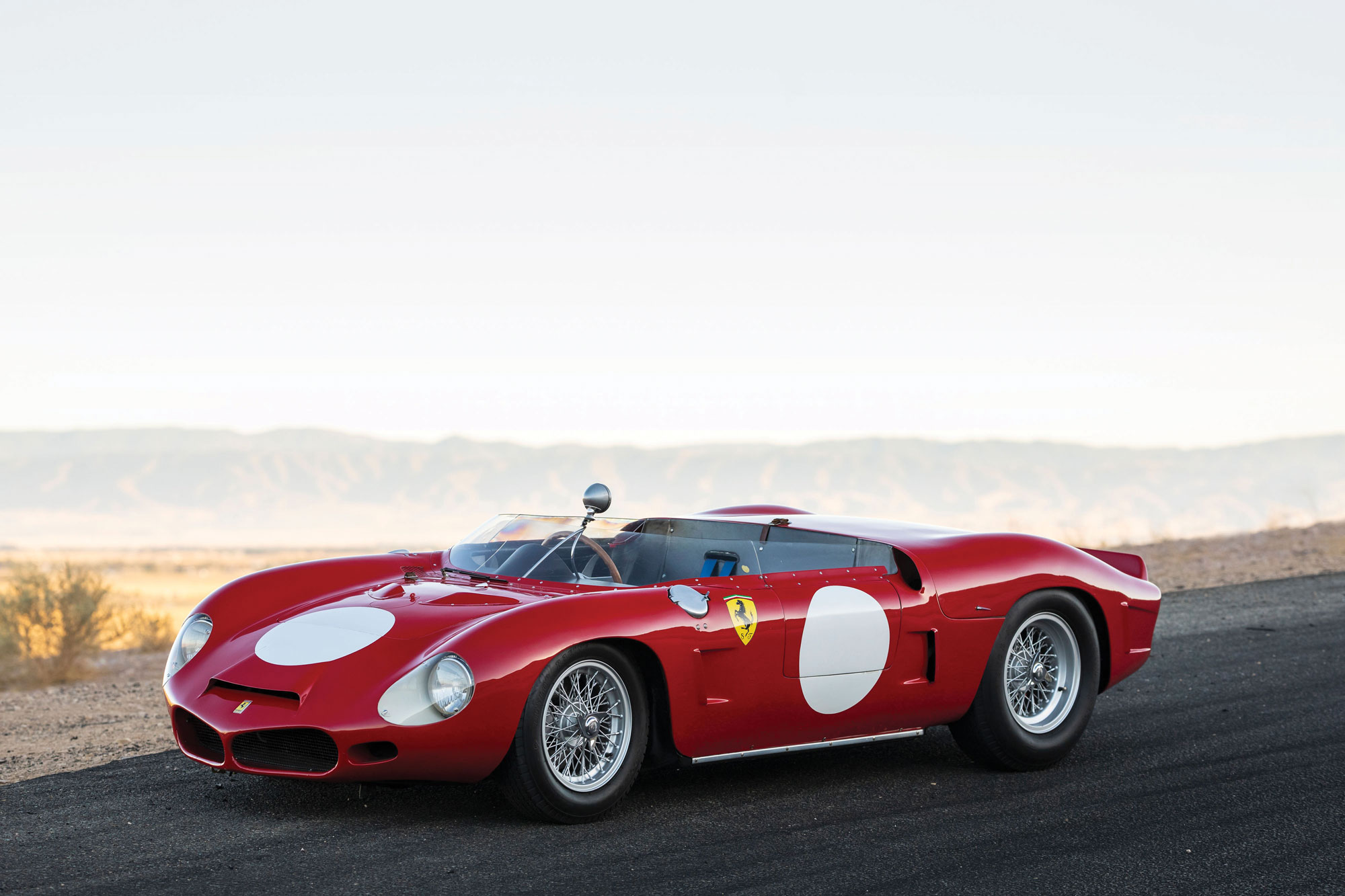Chassis Number: 0798
In 1960, following the lead taken by Cooper and Lotus, Ferrari began to experiment with rear-engine placement in its Formula One and sports-racing cars. The dual overhead-cam V6 engine co-engineered by Vittorio Jano and credited to the late Dino Ferrari was the powerplant of choice, and potential applications ranged from Grand Prix to sports-car racing.
With displacement increased to 2.4 liters, the engine was dropped into two new sports cars, chassis numbers 0790 and 0796, which used purpose-built Type 561 chassis based on the 156 F1 Grand Prix car.
The most dramatic aspect of the SP was surely its breathtaking spider coachwork by Fantuzzi. A complete departure from prior Maranello styling, the new open design featured a low-rise windscreen, delicately curved rear fenders and the innovative sharp spoiler at the edge of the tail. Fantuzzi’s bodywork was punctuated with an aerodynamic protruding nose featuring a twin-nostril grille, similar to that of the Ferrari 156 Formula One driven by Phil Hill in the World Championship in 1961.
While the first two 246 SPs showed significant promise during the 1961 season with a 1st overall finish at the Targa Florio and 3rd place at the Nürburgring 1000 km, they also suffered their share of early retirements. Encouraged by the promising results, Ferrari developed the SP into a broader range in 1962, debuting four SP examples featuring four different engines.
In addition to the 246’s original 2.4-liter displacement, the lineup now featured smaller and larger versions of the Dino V6 (respectively the 196 SP and the 286 SP), as well as a brand-new, extremely unusual V8. The so-called 248 SP featured a 2.4-liter engine that was essentially two-thirds of a 400 Superamerica V12. This motor was initially used on just two cars: the one shown at the press conference, chassis number 0806, and the example presented here, chassis number 0798.

